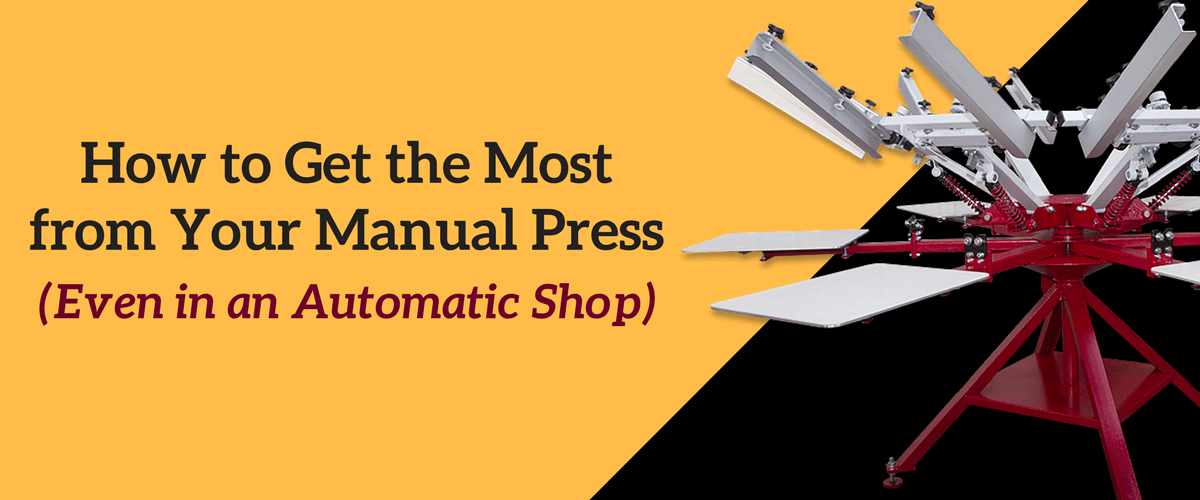No products in the cart.
en

Revolutionizing the screen printing industry through cutting-edge technology and quality service
Phone: +1 847-367-9760
Anatol Equipment Manufacturing Co.
1429 S Shields Dr
Waukegan, IL 60085

Revolutionizing the screen printing industry through cutting-edge technology and quality service
Anatol Equipment Manufacturing Co.
1429 S Shields Dr
Waukegan, IL 60085

While those automatic presses, with all their bells and whistles and faster production time, are undoubtedly exciting, a manual screen printing press remains a valuable tool for even the largest print shops.
It can be tempting to throw every screen printing job that comes your way onto your automatic press, but there are several situations in which a manual press may serve you better.
First a foremost, the major benefit of your automatic press is speed. That means to get the most out of your automatic press, you want to reserve it for your larger press runs. You can maximize your shop’s production by employing your manual press for smaller jobs while your automatic press turns out larger orders. Similiarly, you can use your manual press to produce a quick sample for a client, or perform a trial print; just make sure that when you do this you don’t use any techniques that your automatic press won’t be able to reproduce.

The main advantage a manual screen printing press has over an automatic is adaptability. With a manual screen printing press, you can more easily use specialty inks and special techniques to create a final print that stands out from the ordinary. Special effects inks – such as glitter, puff or foil inks – often print better on a manual press, as the print strokes they require to deposit properly can vary based on the properties of the ink. On a manual press, it’s easy to adjust your print stroke on the fly to ensure you’re putting down a good ink deposit. You can also make adjustments for more challenging prints, like printing over seams.
While the bane of manual press runs is the slower production time, you can take steps to boost your speed on manual press runs. If your press is capable of running “all heads down”, you can have multiple operators put down multiple colors on any of your print heads. Even without “all heads down” ability, you can have one employee load and unload garments from the press while another employee prints, if you have the personnel to spare.
Proper press setup and tools are also important when it comes to production times. Keep production rolling as quickly as possible by making sure your press is perfectly tuned before you print. Off-contact should be set to an ideal distance for the substrate and ink, and screens should be properly tensioned. A screen with low tension requires more effort to print through adequately. Use the right squeegee for the job, and make sure the blade is sharp and free from nicks and notches so you can put down a quality ink deposit with every print stroke. Also make sure your ink has been properly prepared for printing – ink that’s too thick to easily work with creates more unnecessary work from the press operator.
You get the most from your manual press by knowing when to use it, and by knowing how to use it quickly and efficiently. While it can be tempting to rely solely on your automatic press, maintaining manual printing capabilities can help you profitably take on smaller press runs and specialty jobs that aren’t suited to your automatic press. When properly employed, a manual screen printing press can play a vital role in boosting your shop’s productivity and profits.
Looking for some more tips on manual printing? Check out this post:
Finding the Right Technique for Quality Manual Screen Prints
Your message was successfully sent!